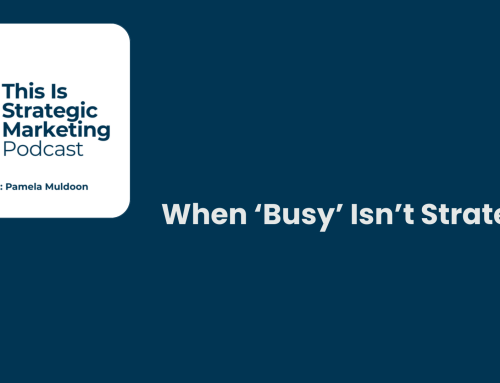For the past two decades,, marketers have debated whether B2B and B2C are truly different—or if we’ve overcomplicated things. Terms like H2H (human to human) and P2P (person to person) emerged to remind us that, behind every business or consumer decision, there’s a person. Others reframed it as B2I (business to individual) or even B2Me, emphasizing personalization at scale. While these frameworks shifted our mindset toward empathy and connection, they didn’t erase the structural realities of how B2B and B2C buyers behave, decide, and engage. That’s why understanding the strategic differences still matters more than ever.
If you’re leading marketing strategy—whether for a scrappy startup or a global brand—you already know content drives business. But one area where even seasoned marketers stumble? Understanding how B2B and B2C content strategies really differ.
This isn’t just about audience types—it’s about how people think, feel, decide, and buy. And if you don’t adjust your content accordingly, even the most beautifully executed campaign will fall flat.
Audience Decision-Making Process
Let’s start with the most critical variable: who you’re speaking to.
B2B buyers don’t operate solo. They’re part of buying committees made up of procurement teams, finance analysts, IT leads, and department heads. Your content has to be built for complexity. Logic, data, and ROI aren’t optional—they’re expected.
B2C buyers, on the other hand, are often individuals or families. They’re driven by emotion, preference, lifestyle alignment, and ease. Connection matters more than justification.
Your job is to speak their language, whether that’s a business case or a personal story.
Content Goals
B2B content is built for trust. You’re nurturing long-term relationships, establishing thought leadership, and helping prospects solve real business challenges. Think whitepapers, case studies, and detailed guides that educate and guide.
B2C content is about the now. Make me laugh. Inspire me. Show me what’s possible with your product. If it gets someone to click “Buy Now,” you’ve done your job.
In both cases, you’re solving problems, but the timelines and emotional levers are radically different.
Content Formats
In B2B, long-form content is more the norm than the exception. Webinars, eBooks, and industry reports help demonstrate expertise. Case studies are gold. This content proves that your solution works—and helps your buyer convince internal stakeholders.
B2C is built for speed and shareability. Think short-form videos, lifestyle blogs, infographics, social media snippets, and user-generated content. Visuals matter, and snackability is the name of the game.
If your audience doesn’t scroll, stop, and engage in seconds, you’ve likely missed them.
Tone and Style
B2B content is often formal, structured, and informative. You’re speaking to experts—or at least people who want to sound like experts in their next internal meeting. That doesn’t mean dry; it means deliberate.
B2C content thrives on a conversational tone. Humor, emotion, storytelling—these aren’t nice-to-haves. They’re how you build connection and loyalty. You’re not just selling a product—you’re selling a feeling.
Sales Cycle Length
B2B buying cycles are long. Like, really long. You need to nurture with purpose: blog posts for awareness, webinars for consideration, case studies and demos for decision. The B2B customer journey is a complicated one. It’s critical to create and distribute content for every stage of this journey.
B2C sales cycles can be measured in minutes. See it, love it, buy it. The content here is about fast impact—compelling CTAs, persuasive messaging, and clear product benefits.
Know the pace of your audience—and build your funnel accordingly.
Content Depth and Complexity
B2B buyers want depth. They’re making high-stakes decisions, and they need evidence. That means technical guides, original research, and detailed analysis that answers real business questions.
B2C buyers want clarity. Even if your product is complex, your content should be simple. Easy-to-understand visuals and plain language outperform jargon every time.
Keep it tight. Keep it clear.
Content Longevity
B2B content often plays the long game. Evergreen assets like whitepapers and resource hubs help build authority and support long sales cycles. You invest once, update occasionally, and reap the benefits for months or years. Repurposing and reimagining, whether long-form to short-form or vice versa, is critical to your content strategy and implementation.
B2C content is trend-driven. That viral meme, seasonal sale, or TikTok challenge? It’s hot today and gone tomorrow. Agility is your advantage here. Speed matters.
Plan your content calendar with both freshness and relevance in mind.
Relationship vs. Transactional Focus
Here’s the biggest philosophical split.
B2B marketing is about partnership. You’re not just trying to sell—you’re trying to stay. Content helps you become a trusted resource, a reliable vendor, even a strategic advisor.
B2C marketing is more transactional. Yes, loyalty matters—but first, you have to win the click. That means persuasive messaging, social proof, and clear value props that drive action now.
In both cases, trust is the foundation. But the paths to earning it look very different.
Strategy Starts With Clarity
The line between B2B and B2C may be blurrier today, thanks to more personalized tech and emotionally intelligent messaging, but it hasn’t disappeared. Yes, today’s buyers expect relevance, empathy, and human connection. That’s where models like H2H and P2P have helped reshape how we approach engagement. But as strategic marketing leaders, we still have to respect the realities of context: decision complexity, buying timelines, content depth, and relationship dynamics.
So before you write another post, plan your next campaign, or brief your creative team—ask yourself one question:
“Are we truly speaking to the decision-maker in the way they need to hear it?”
Because content that resonates is content that converts.


